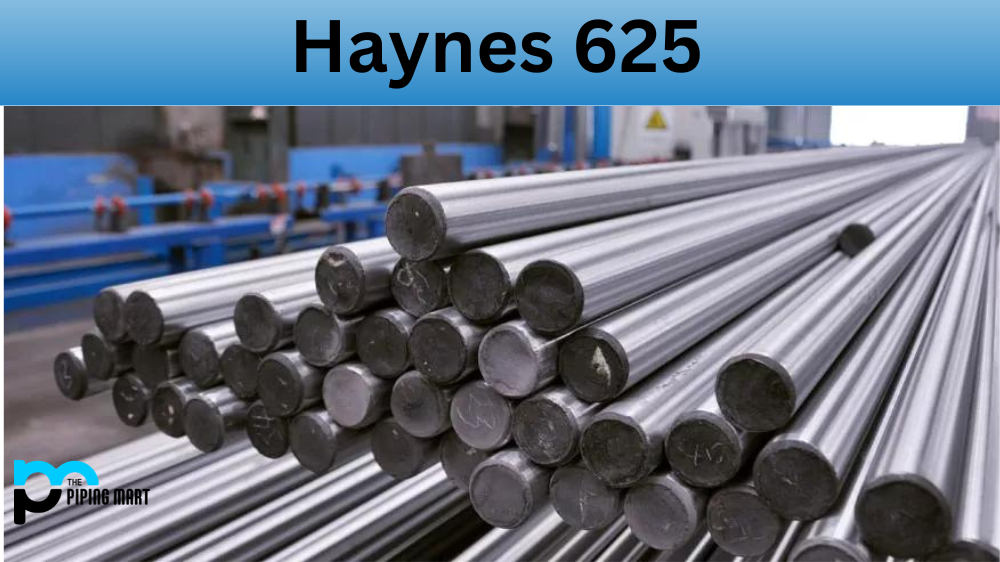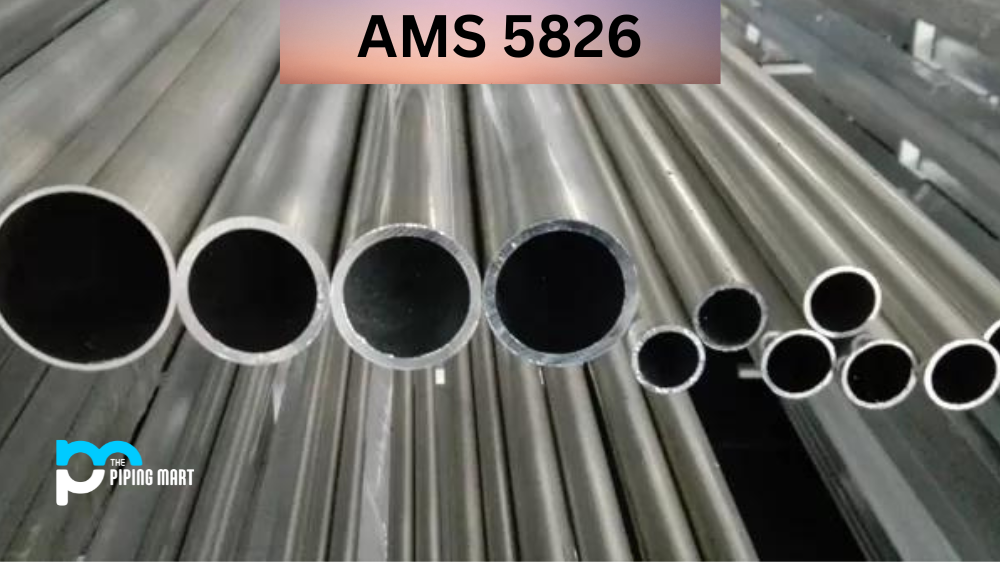UNS N06625 alloy is a nickel-chromium-molybdenum-tungsten superalloy developed for high-temperature applications requiring excellent corrosion and oxidation resistance. This alloy has excellent strength and toughness at temperatures up to 1500°F (816°C). It also offers superior thermal fatigue resistance, making it an ideal choice for aircraft components and other critical parts. In this blog, we’ll discuss the composition, mechanical properties, physical properties, uses, and corrosion resistance of Haynes 625 alloy.
625 Haynes Composition
The primary elements in Super Alloy HAYNES 625 (UNS N06625) are nickel (58%), chromium (21%), molybdenum (9%), tungsten (5.25%), and iron (4%). Minor amounts of manganese (1.50%), silicon (.30%), carbon (.20%), aluminium (.15%), and titanium (.10%) are also present.
| Element | Content (%) |
|---|---|
| Nickel, Ni | 62 |
| Chromium, Cr | 21 |
| Molybdenum, Mo | 9 |
| Iron, Fe | ≤ 5 |
| Tantalum, Ta | 3.7 |
| Niobium, Nb | 3.7 |
| Cobalt, Co | ≤ 1 |
| Manganese, Mn | ≤ 0.50 |
| Silicon, Si | ≤ 0.50 |
| Titanium, Ti | ≤ 0.40 |
| Aluminum, Al | ≤ 0.40 |
| Carbon, C | ≤ 0.10 |
625 Haynes Mechanical Properties
Super Alloy HAYNES 625 exhibits excellent tensile strength and creep rupture strength at elevated temperatures. At room temperature, its yield strength is typically around 120 ksi, while its ultimate tensile strength ranges from 145 to 180 ksi depending on the condition of the material. Its elongation is typically around 30%, while its area reduction is usually about 40%.
| Properties | Metric | Imperial |
|---|---|---|
| Tensile strength | 915 MPa | 133000 psi |
| Yield strength | 425 MPa | 61600 psi |
| Elastic modulus | 208 GPa | 30200 ksi |
| Elongation at break | 46% | 46% |
625 Haynes Physical Properties
The density of Haynes 625 is 0.293 lb/in3 with an electrical resistivity of 860 mΩ-cm at 68 °F. Its thermal conductivity is 11 Btu/ft2/hr/ft/°F with a thermal expansion coefficient of 9 x 10–6 in./in./°F between 68 °F and 932 °F.
| Properties | Metric | Imperial |
|---|---|---|
| Density | 8.44 g/cm3 | 0.305 lb/in3 |
| Melting point | 1290 – 1350°C | 2350 – 2460°F |
625 Haynes Thermal Properties
| Properties | Metric | Imperial |
|---|---|---|
| Thermal expansion co-efficient (@25-200°C/77-392°F) | 12.8 µm/m°C | 7.11 µin/in°F |
| Thermal conductivity | 9.80 W/mK | 68 BTU in/hr.ft².°F |
625 Haynes Equivalent
| AMS 5599 | AMS 5837 | AMS 5879 | ASTM B443 | ASTM B444 |
|---|---|---|---|---|
| AMS 5581 | AMS 5666 | ASTM B366 | ASTM B446 | ASTM B704 |
| ASTM B705 | DIN 2.4856 | GE B50TF133 | MIL E-21562 (RN625) |
625 Haynes Uses
625 Haynes alloy has been used in various industries, including aerospace for high-temperature turbine blades, combustors, afterburners, and exhaust systems; energy production for heat exchangers; chemical processing for heat exchangers; and marine applications such as valves and pumps.
Corrosion Resistance
This alloy 625 is highly resistant to oxidation at elevated temperatures due to its high chromium content, which forms a protective oxide layer on the surface when exposed to oxygen at temperatures over 1000°F (538°C). It is also resistant to carburization but can be susceptible to sulfidation if exposed to environments containing sulfur compounds or hydrocarbons containing sulfur compounds.
Conclusion
Haynes 625 is an incredibly versatile superalloy that can be used in many applications requiring good corrosion resistance at high temperatures, such as aerospace components, energy production equipment, chemical process equipment, valves & pumps in marine environments etc. It offers excellent mechanical properties such as high tensile strength & creep rupture strength even at elevated temperatures, along with good corrosion resistance due to its high chromium content, which forms a protective oxide layer on the surface when exposed to oxygen at temperatures over 1000 °F (538 °C). If you need an alloy with these properties, look no further than Haynes 625!

A passionate metal industry expert and blogger. With over 5 years of experience in the field, Palak brings a wealth of knowledge and insight to her writing. Whether discussing the latest trends in the metal industry or sharing tips, she is dedicated to helping others succeed in the metal industry.




